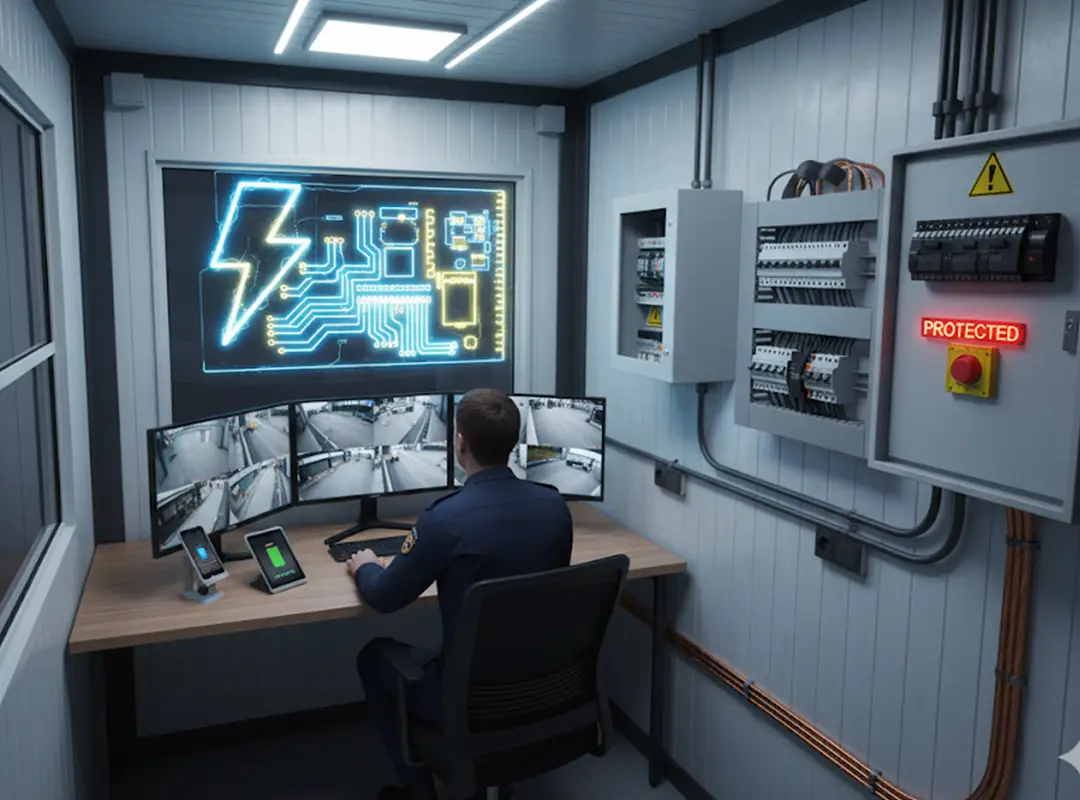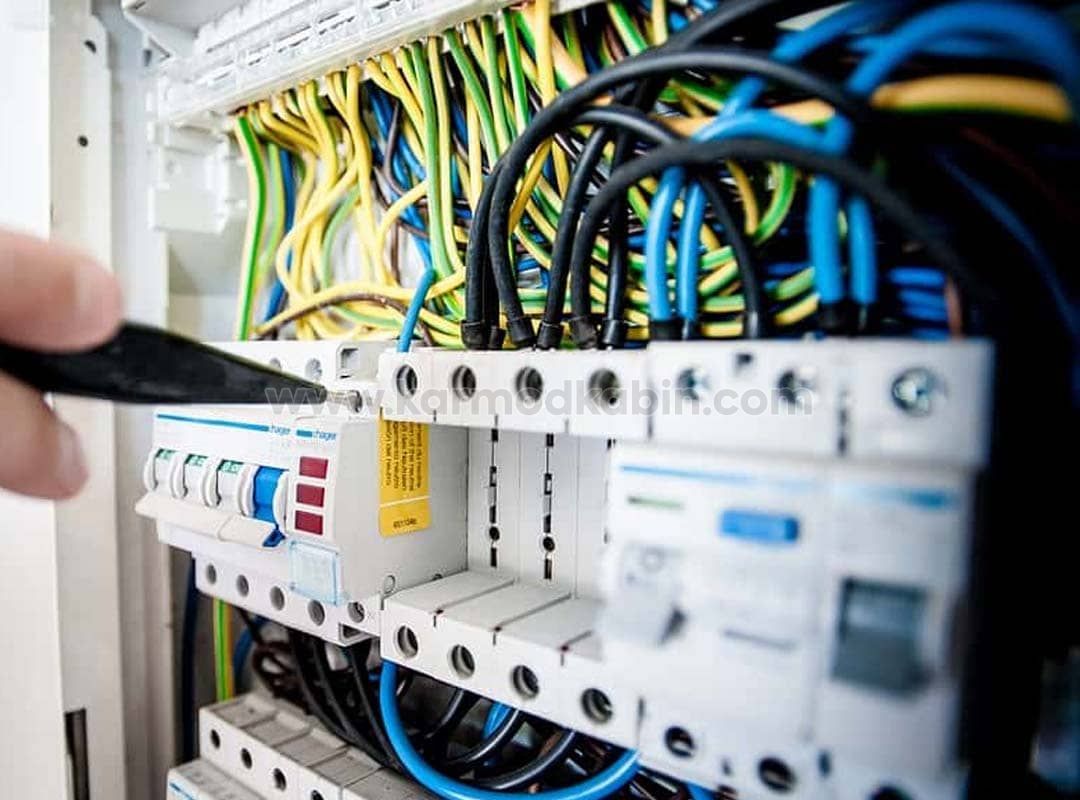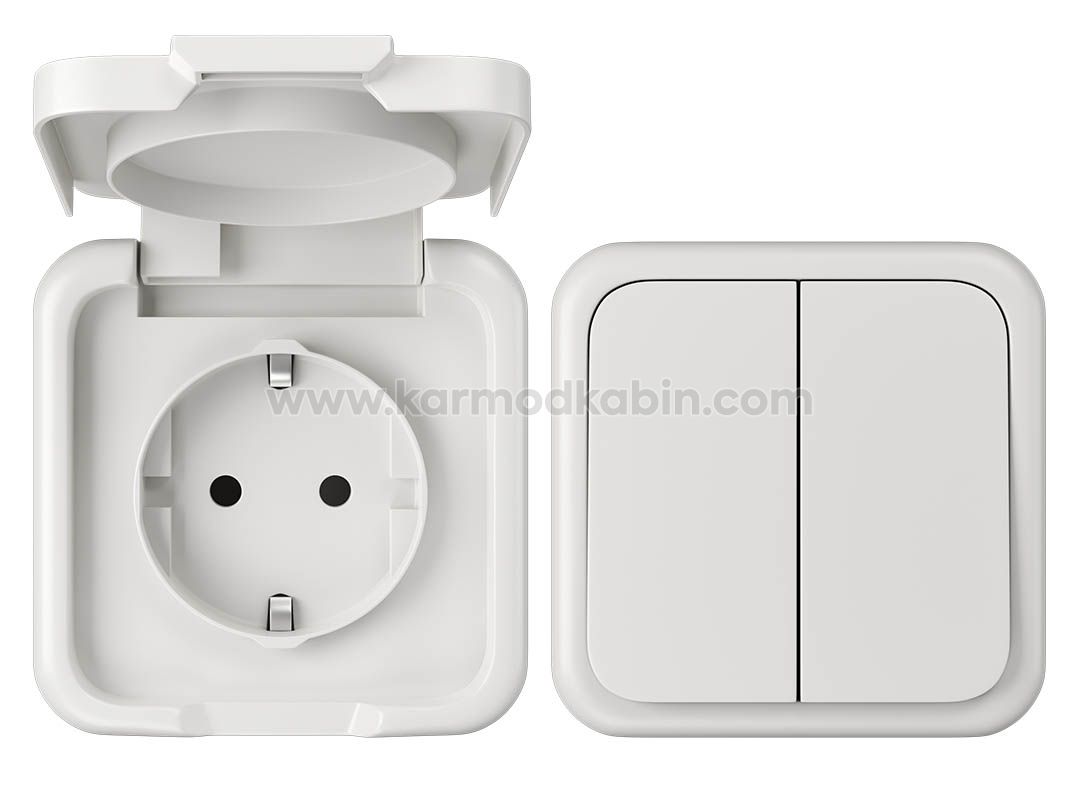
Security cabins play a vital role in safeguarding properties, industrial zones, residential complexes, and construction sites. Since these cabins often operate 24/7, a safe and reliable electrical installation is one of the most critical aspects of their design. Whether used for guard personnel, surveillance systems, or access control, proper electrical planning ensures continuous functionality, safety, and comfort.
A well-designed electrical setup not only powers lighting and equipment efficiently but also protects both the structure and its occupants from potential hazards. Poor installation can lead to serious risks such as electrical fires, short circuits, or equipment failures. For this reason, professional installation and periodic maintenance are essential for every security cabin - from standard guard booths to advanced modular surveillance units.
Security cabins play a vital role in safeguarding properties, industrial zones, residential complexes, and construction sites. Since these cabins often operate 24/7, a safe and reliable electrical installation is one of the most critical aspects of their design. Whether used for guard personnel, surveillance systems, or access control, proper electrical planning ensures continuous functionality, safety, and comfort.
A well-designed electrical setup not only powers lighting and equipment efficiently but also protects both the structure and its occupants from potential hazards. Poor installation can lead to serious risks such as electrical fires, short circuits, or equipment failures. For this reason, professional installation and periodic maintenance are essential for every security cabin - from standard guard booths to advanced modular surveillance units.
Electrical design is the heart of every security cabin’s performance. These compact structures rely on consistent power to operate cameras, communication systems, lighting, and sometimes even climate control units. A single wiring error or poorly planned circuit can lead to interruptions that compromise safety and reliability. That’s why safe electrical design is not optional - it’s essential for ensuring uninterrupted security operations day and night.
Beyond functionality, proper electrical planning directly affects the safety of personnel. Guard cabins are often small, enclosed environments, meaning any electrical malfunction can escalate quickly. When circuits are properly balanced, wires insulated, and systems grounded, the risks of shock, fire, or equipment failure are significantly reduced. Using certified components and adhering to national standards ensures your security cabin performs safely and efficiently under all conditions.
Moreover, investing in quality electrical work from the start saves time and money in the long run. It prevents frequent repairs, reduces energy consumption, and increases the overall lifespan of your modular unit. When it comes to security cabins, the right electrical design equals peace of mind - for both the occupants and the property they protect.
A dependable electrical system is the foundation of any secure and efficient security cabin. Because these units often operate around the clock, every element - from wiring to breakers - must be designed with safety, durability, and performance in mind. Understanding the core components of a well-engineered electrical setup helps homeowners, contractors, and site managers make informed decisions when installing or maintaining their security cabins.

High-quality wiring is the first step toward a safe electrical network. Using cables with proper insulation and load capacity prevents overheating and short circuits. For compact structures like security cabins, fire-resistant copper wiring is the preferred choice, as it offers superior conductivity and long-term stability. Circuit breakers, on the other hand, serve as the system’s primary protection line - cutting power instantly in case of overloads or faults. Investing in certified circuit breakers is a small cost that prevents major damage.
Grounding is one of the most critical safety measures for steel or metal-framed cabins. It ensures that any stray electrical current is safely directed into the earth, minimizing the risk of shocks. Surge protectors are equally essential, especially in areas prone to lightning or power fluctuations. A well-grounded and surge-protected system keeps sensitive electronics - such as security cameras and control panels - functioning smoothly without unexpected breakdowns.
Security cabins cannot afford downtime. To maintain continuous protection, it’s wise to include a backup power source, such as a small generator, solar battery system, or UPS (uninterruptible power supply). These systems automatically activate during outages, keeping lighting, monitoring equipment, and alarms operational even when the main grid fails. Reliable backup solutions are not just convenient - they are vital for maintaining uninterrupted security coverage.
Electrical safety standards evolve continually, and staying updated with current regulations is vital for maintaining compliance and protecting lives. In 2025, security cabins - especially modular and prefabricated models - must adhere to strict electrical installation codes to ensure safe operation under various environmental conditions. These standards regulate everything from wiring types to circuit protection, grounding systems, and even fire-resistant materials used in enclosed areas.
Internationally recognized frameworks such as the IEC (International Electrotechnical Commission) and ISO safety standards set the baseline for design and installation. In addition, every country enforces its own set of national electrical codes that builders must follow. For example, proper labeling of circuits, adequate breaker spacing, and fire-retardant cable insulation are no longer optional - they are mandatory requirements in most jurisdictions.
Another crucial factor is working with certified electricians familiar with modular construction. Electrical systems in prefabricated cabins differ from traditional buildings; they require precision, compact integration, and safe cable routing within tight spaces. Certified professionals understand these nuances and ensure compliance with both local and international safety regulations.
Following these standards not only protects the occupants of the cabin but also enhances the credibility and market value of your product. In the modern prefab industry, safety compliance is not a formality - it’s a mark of quality and professionalism.
Security cabins are compact spaces that often support multiple electrical devices - lighting systems, CCTV cameras, air conditioning units, computers, and sometimes even heating equipment. When all of these operate simultaneously, the electrical system can become strained. Preventing overloads and short circuits is therefore a top priority to maintain both safety and performance.
One of the most effective ways to prevent overloads is through accurate load calculation. Each circuit should be designed with a defined capacity that matches the expected power usage of connected devices. When circuits are overloaded, they heat up and increase the risk of fire or wire damage. To avoid this, always distribute power across multiple circuits, ensuring no single line carries more than its rated capacity.
Equally important is the quality of connections and materials. Loose fittings, poorly insulated wires, or unapproved extensions can trigger short circuits, which can rapidly escalate into electrical fires. Using certified cables, properly rated plugs, and professional installation methods minimizes this risk significantly.
A few additional best practices include:
With the right system design and regular attention, your security cabin can operate efficiently for years without electrical failures. Smart distribution, quality materials, and professional workmanship are the keys to a truly safe installation.
Even the most carefully installed electrical system requires routine maintenance and inspection to remain safe and efficient. In a security cabin that operates continuously, small electrical issues can easily go unnoticed until they become serious. Regular maintenance helps detect potential hazards early - protecting both the personnel inside and the equipment that depends on stable power.
Electrical inspections should be scheduled on a monthly and annual basis. Monthly checks are ideal for identifying visible signs of wear or malfunction, such as loose plugs, damaged sockets, or flickering lights. Annual inspections, on the other hand, should be carried out by a licensed professional to assess the integrity of wiring, grounding systems, and circuit loads.

Here are some practical maintenance recommendations for security cabins:
Preventive maintenance reduces downtime, avoids emergency repairs, and extends the life of every component in your system. When properly maintained, a security cabin’s electrical setup delivers uninterrupted protection - exactly what’s needed for 24/7 operational reliability.
As technology advances, security cabins are becoming more energy-efficient, automated, and sustainable. Modern electrical installations go beyond functionality - they are designed to optimize power usage, reduce costs, and improve long-term reliability. By incorporating smart energy solutions, security cabins can operate continuously without consuming unnecessary energy, which is especially valuable for sites that require 24-hour monitoring.
LED lighting has become the new standard for security cabins. It provides bright illumination with minimal power consumption and lasts significantly longer than traditional bulbs. Combining LEDs with automatic timers or motion sensors ensures lights only operate when needed, reducing energy waste. Energy-efficient electrical panels and low-voltage systems also help maintain consistent performance while minimizing strain on circuits - a key advantage for compact cabin layouts.
Security cabins in remote areas often rely on renewable energy sources, particularly solar power systems. Modern designs include rooftop solar panels paired with storage batteries, allowing cabins to operate independently from the main grid. Solar-powered lighting, surveillance, and communication equipment make these units eco-friendly while maintaining full operational capacity. Hybrid systems that combine solar with backup generators or grid connections offer even greater flexibility.
By adopting smart and sustainable electrical solutions, you not only improve energy efficiency but also enhance the overall reliability and independence of your security cabin. Energy-smart designs are quickly becoming a benchmark in modern modular construction - blending safety, performance, and environmental responsibility in one complete package.
Electrical work in security cabins requires precision, compliance, and experience. Partnering with certified professionals ensures that every circuit, outlet, and safety device is installed correctly - protecting not only your investment but also the lives of those working inside. A professional team understands how to design efficient layouts in compact modular spaces while meeting the latest 2025 safety standards.
At our company, we specialize in turnkey security cabins with fully integrated electrical systems. From energy-efficient lighting to backup power and surge protection, every unit is built with longevity and safety in mind. Our engineers follow international regulations and use high-quality components to guarantee stable performance even under heavy usage.
If you’re planning to purchase or upgrade a security cabin, choose a partner that prioritizes both innovation and safety:
Certified electrical design and installation compliant with modern standards.
Custom configurations for your specific operational needs.
Durable materials that reduce maintenance and energy costs.
Expert support from design to after-sales service.
A secure environment begins with reliable power.
Contact us today to learn more about our professionally engineered security cabins - where advanced electrical safety meets lasting quality and peace of mind.